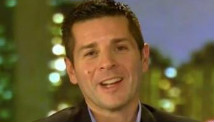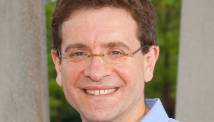Dec 26, 2012 8:22am

Russian police officers detain a demonstrator protesting against a bill banning US adoptions of Russian children outside the Russian parliament's upper chamber in Moscow, Dec. 26, 2012.(Misha Japaridze/AP Photo)
MOSCOW — The upper house of the Russian parliament unanimously approved a ban on adoptions to the United States on Wednesday. All eyes are now on the Kremlin as the bill goes to President Putin for his signature.
The ban was added last week to a broader bill retaliating for human rights sanctions signed by President Obama earlier this month. Putin has expressed support for the broader bill, which reciprocates the sanctions, but dodged questions last week about the adoption ban.
At stake are the cases of 46 Russian children whose adoptions would be frozen if the bill becomes law, according to Russia’s children’s ombudsman Pavel Astakhav. He said those children would receive priority to be adopted by Russian families.
The proposed ban has split Russian society. Outside the parliament at least seven people were detained while protesting the bill, according to RIA Novosti. Human rights advocates have urged Russian authorities not to move forward with the ban, saying it denies Russian orphans a home with a family.
It has also caused a rare division among the Russian government.
Several top officials, including Russia’s foreign minister and education minister have come out against the ban. A leaked memo from another top official suggested its passage would cause Russia to breach several international treaties, including a recently enacted adoption agreement between the United States and Russia.
Others, like Astakhav, have supported the measure, saying that Russian children should remain in Russia.
A recent poll by the Public Opinion Foundation found a majority of Russians supported the ban, while a quarter opposed it and another quarter expressed no opinion.
Russia is the third most popular place for Americans to adopt children. According to the State Department, over 45,000 Russian children have been adopted by American families since the fall of the Soviet Union in 1991.
Russian officials, however, have pointed to the cases of 19 Russian adopted children who have been killed in the United States as evidence of broader mistreatment of Russian children by their adopted parents. The adoption ban bill was named after Dima Yakovlev, who died in 2008 after his adoptive father left him in a car in a Washington, D.C., suburb. The bill also slaps sanctions on Americans accused of abusing Russian children and judges deemed to have provided them with lenient sentences.














